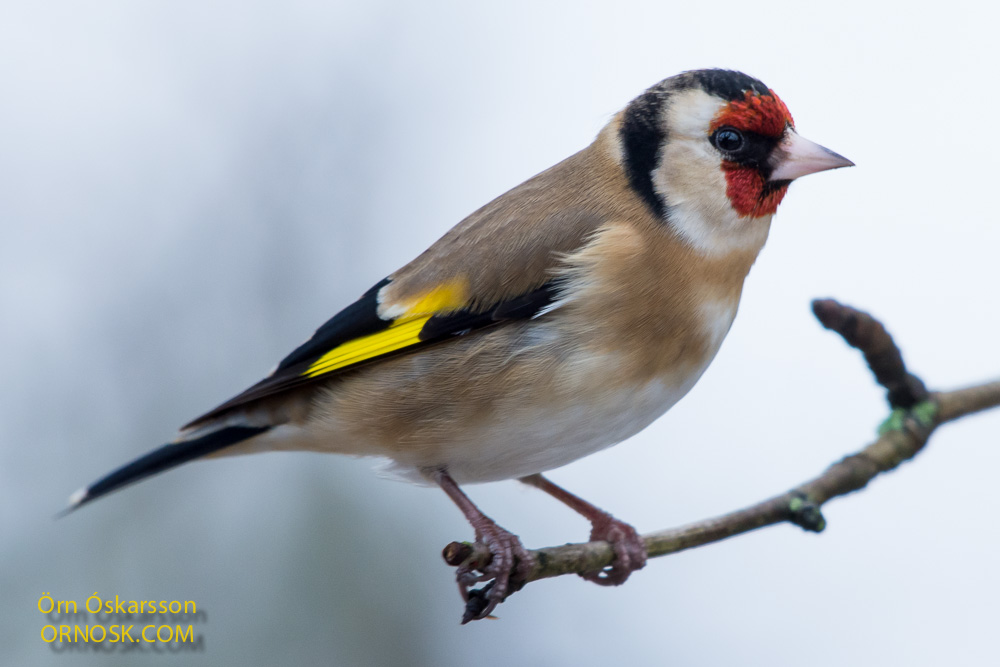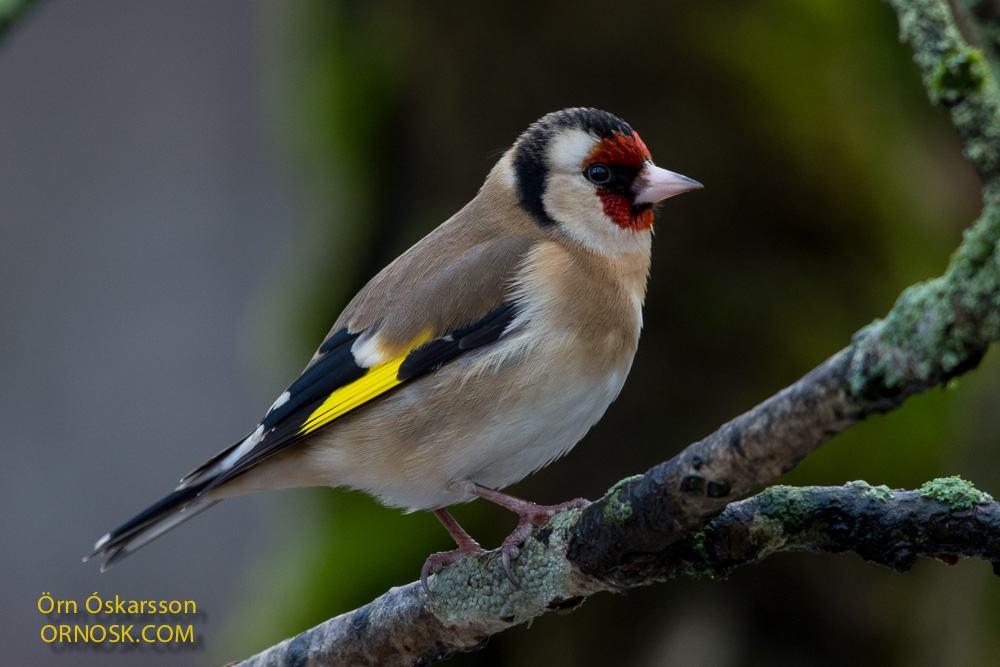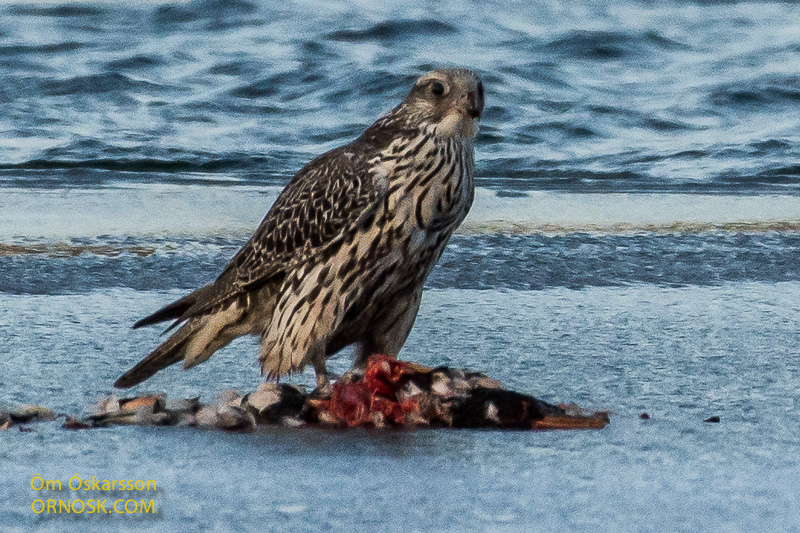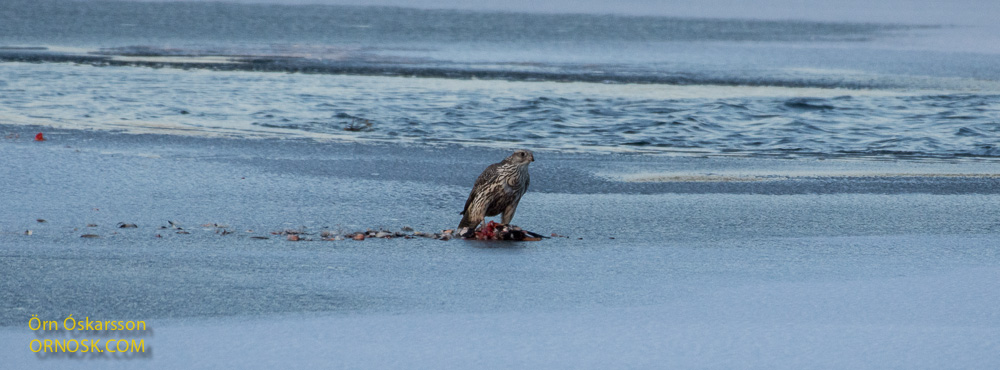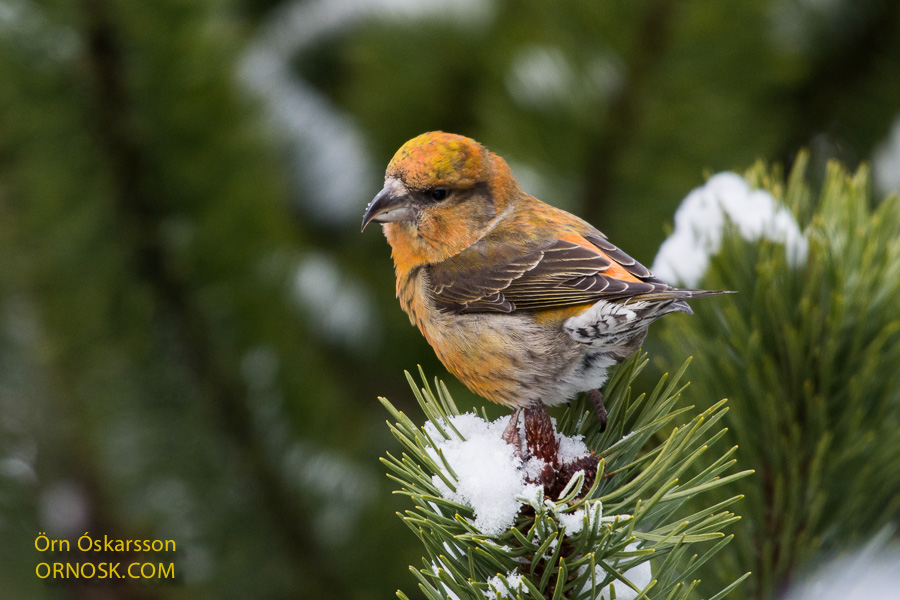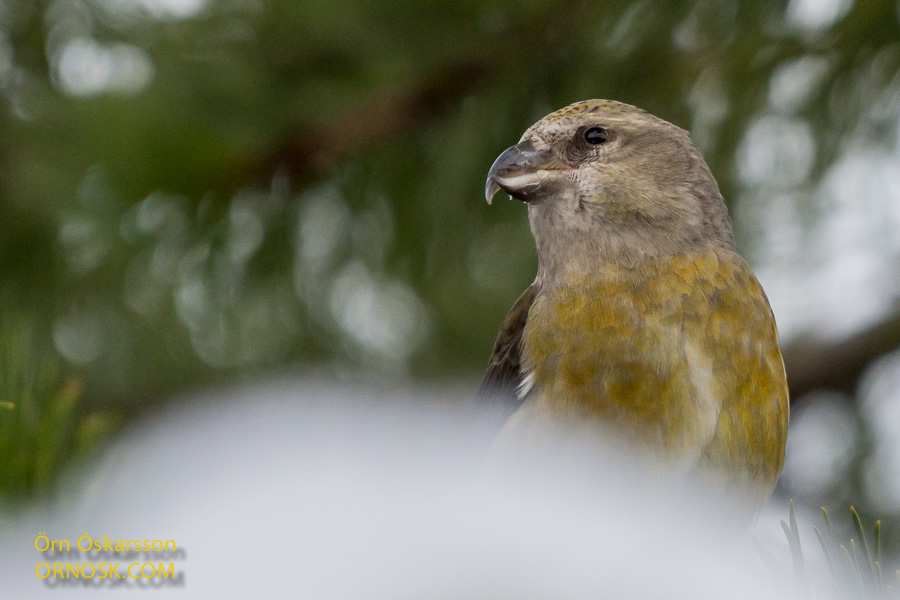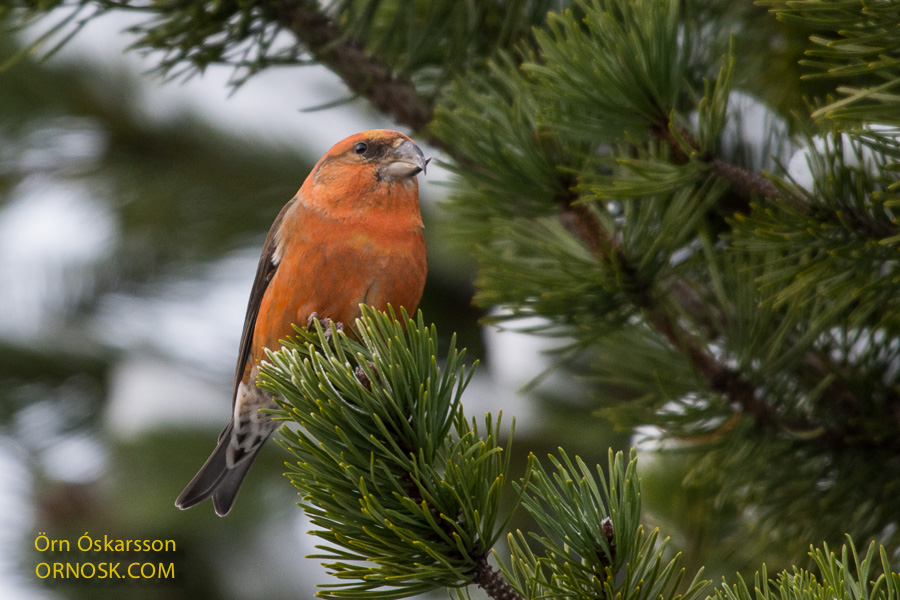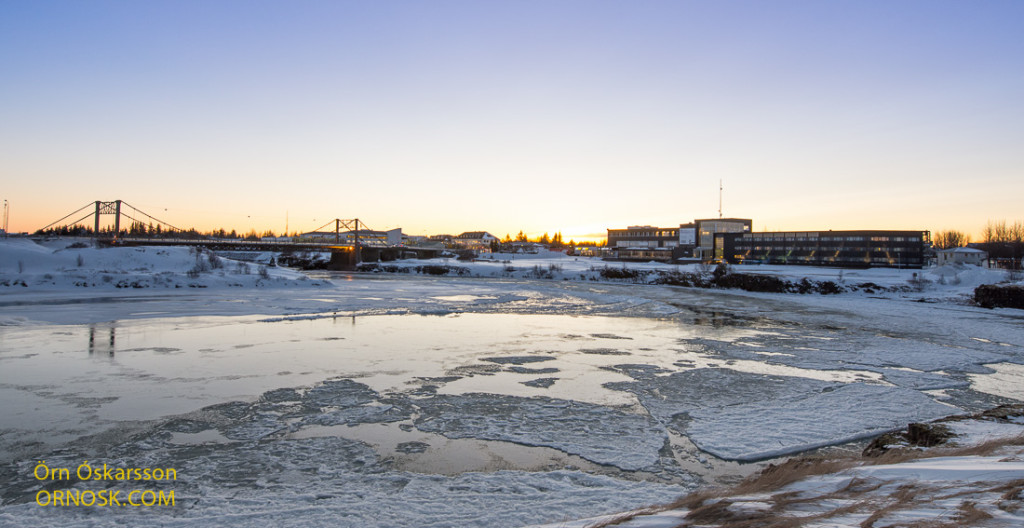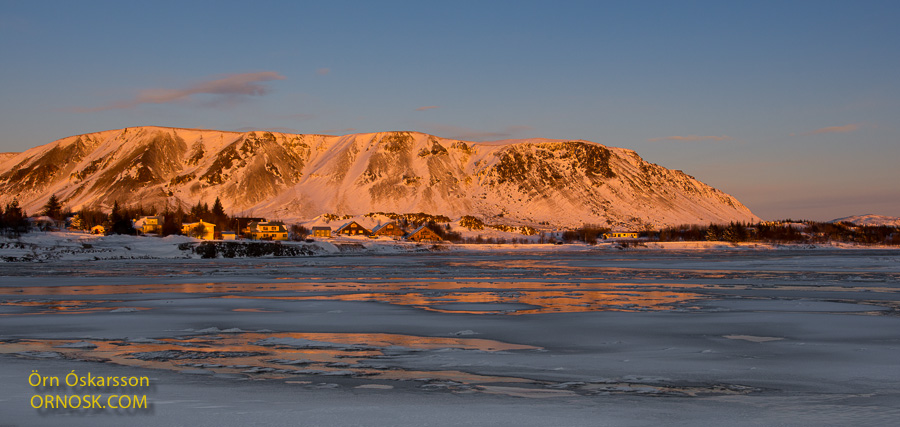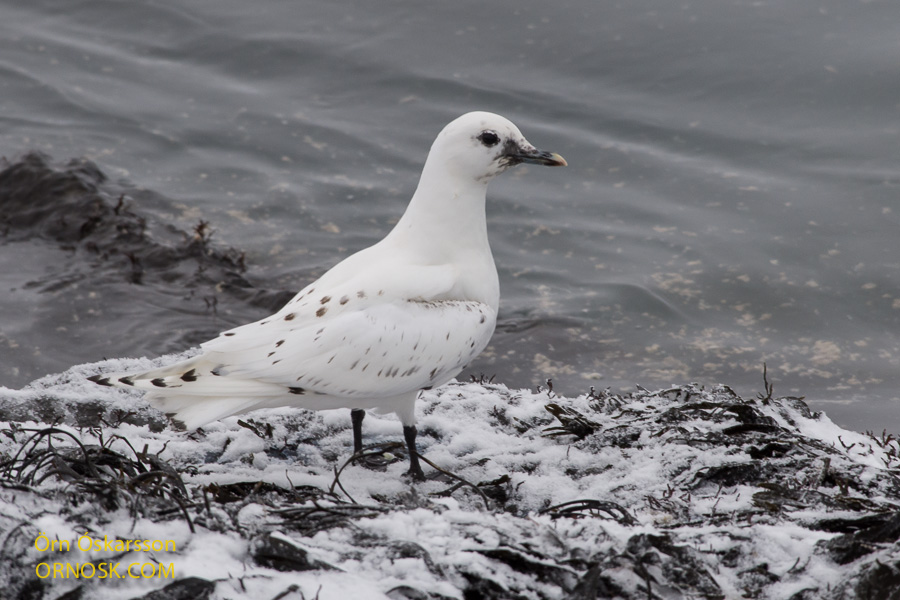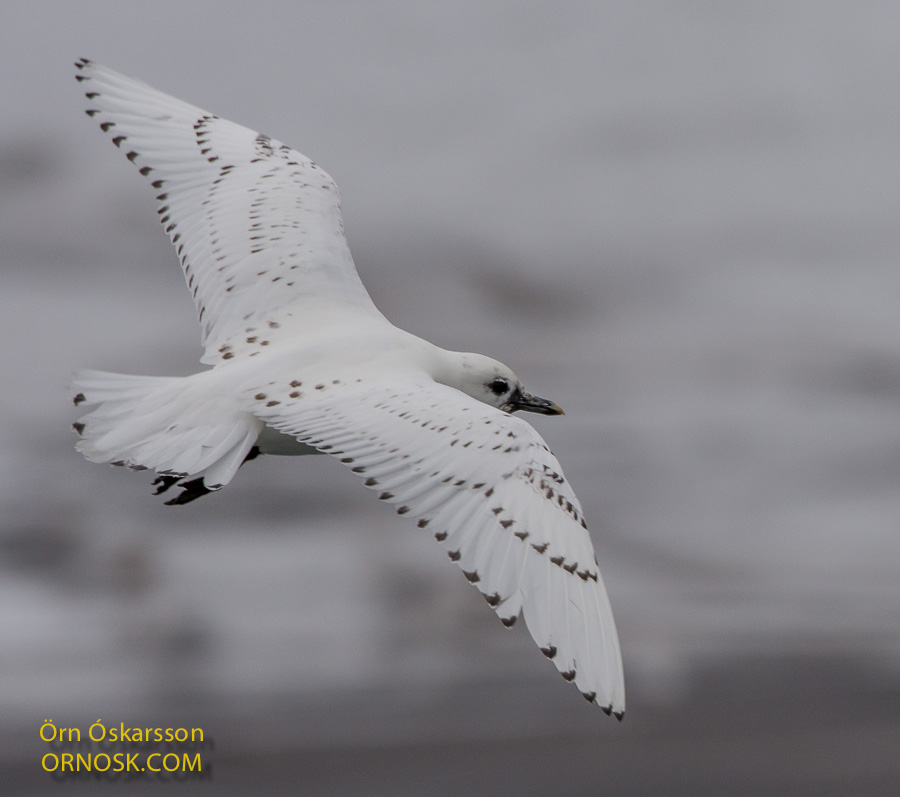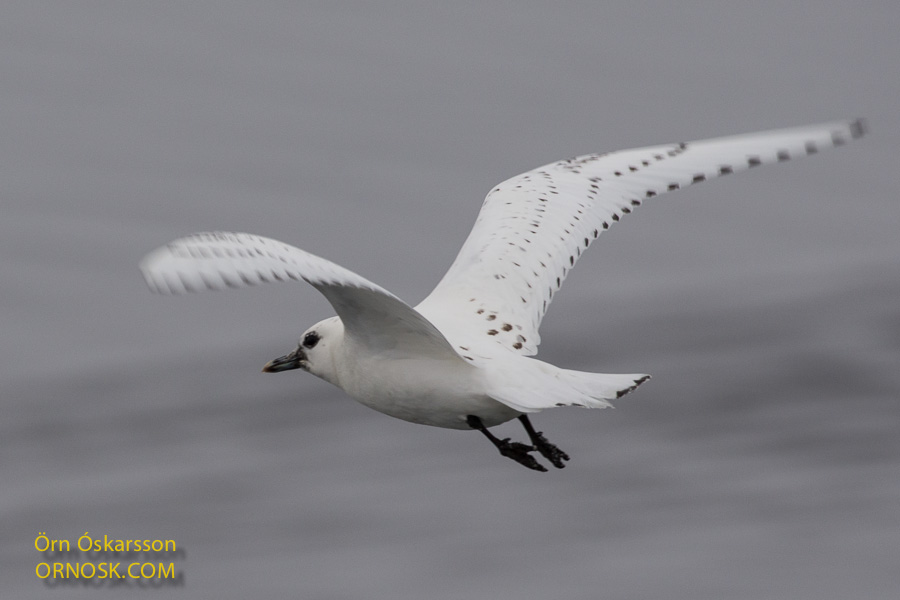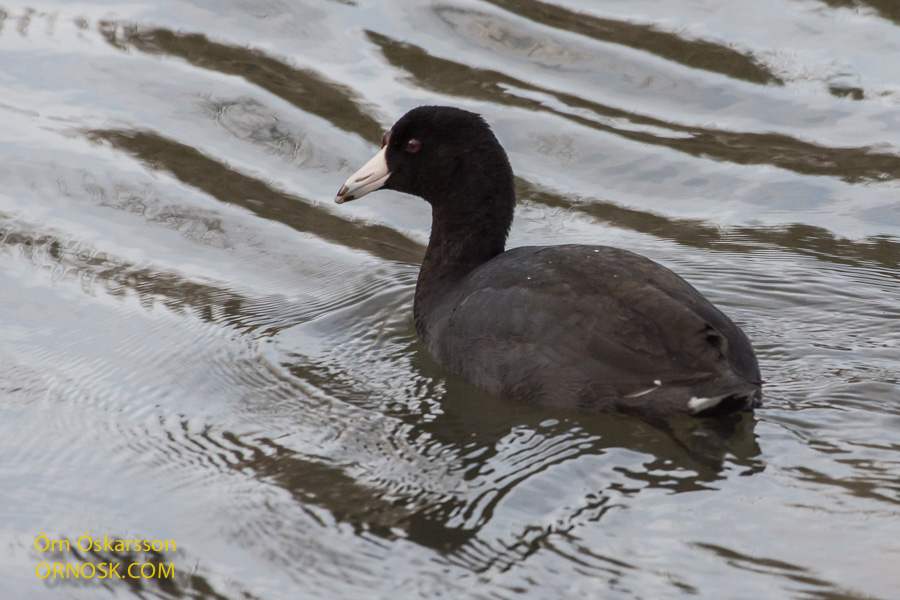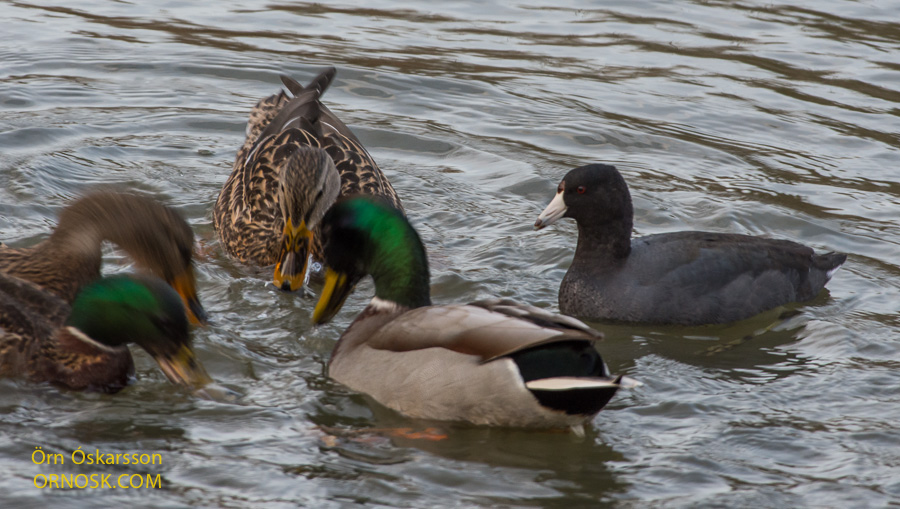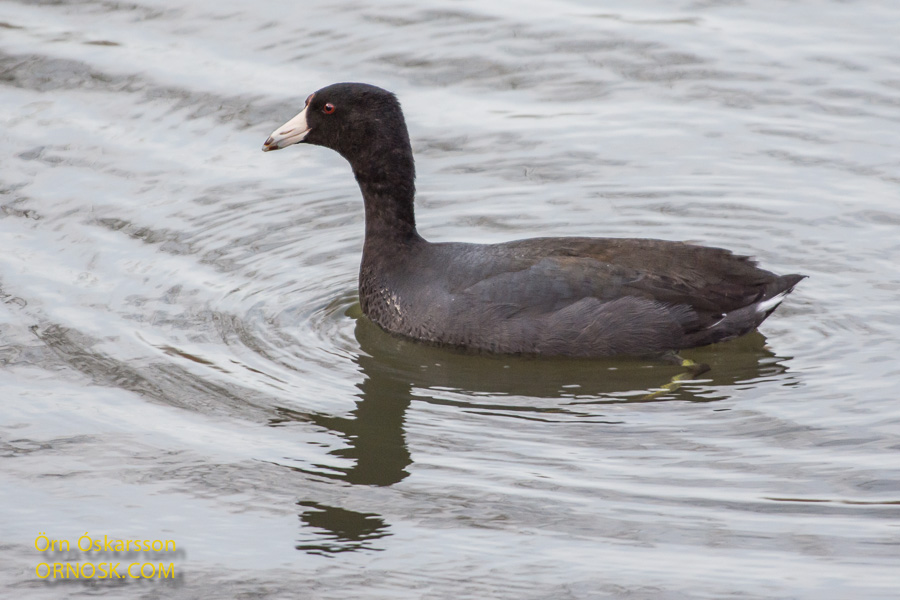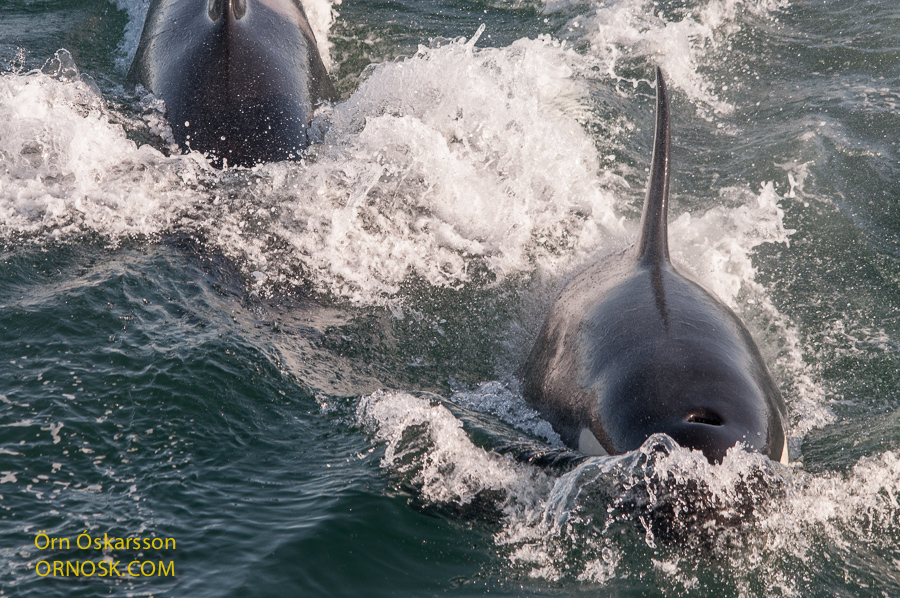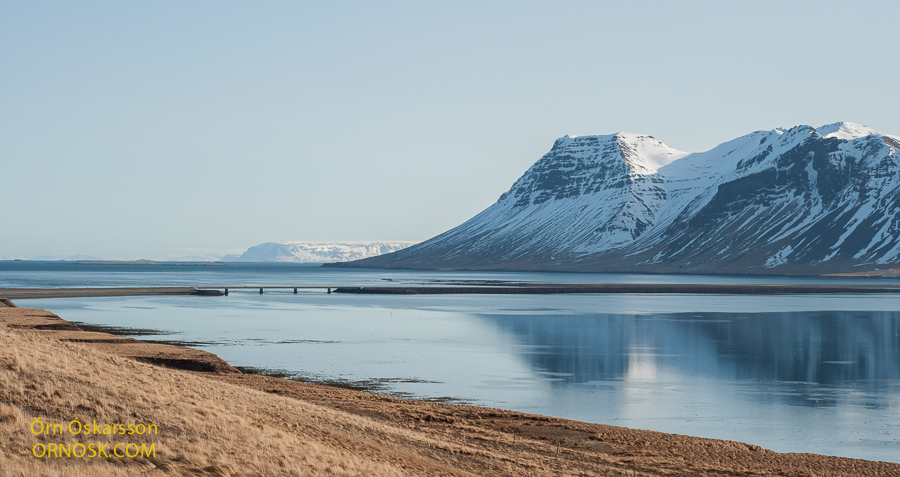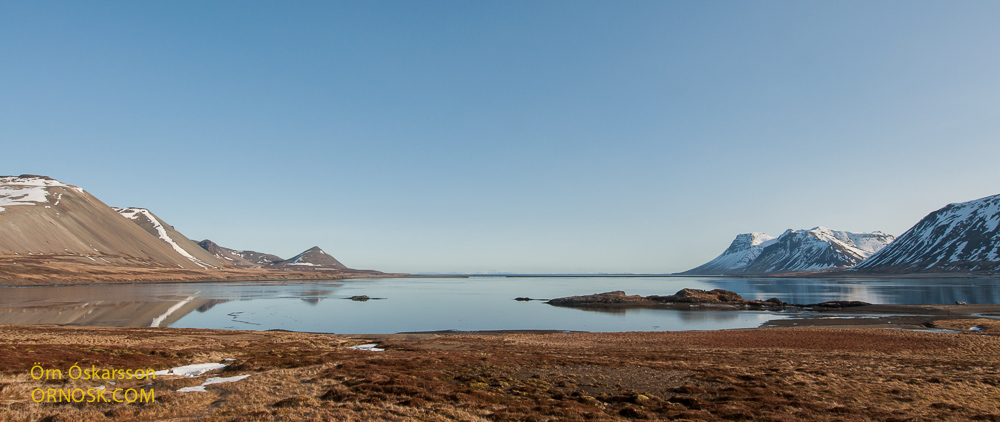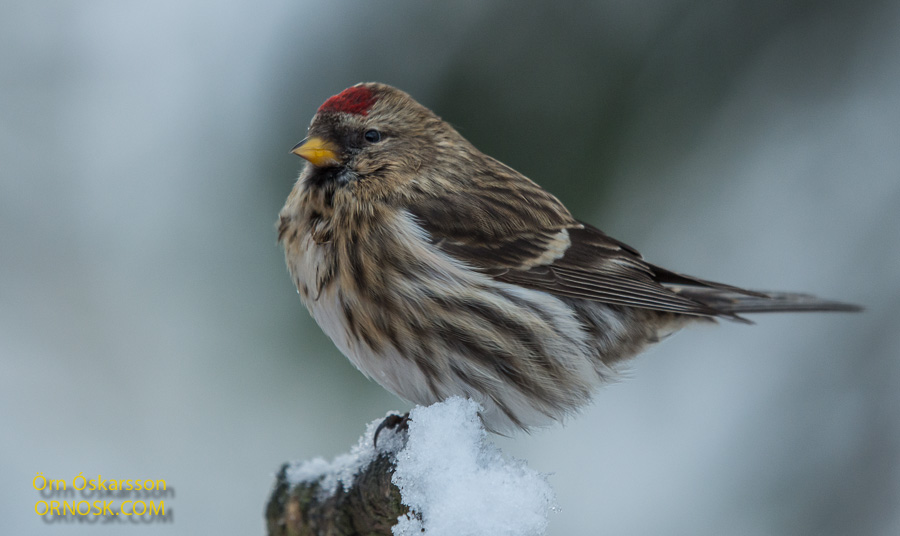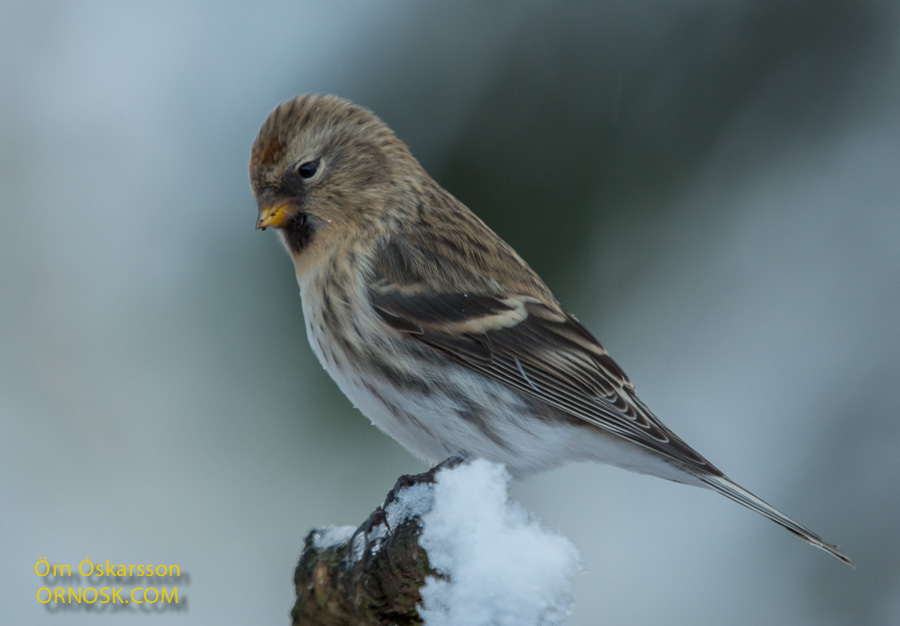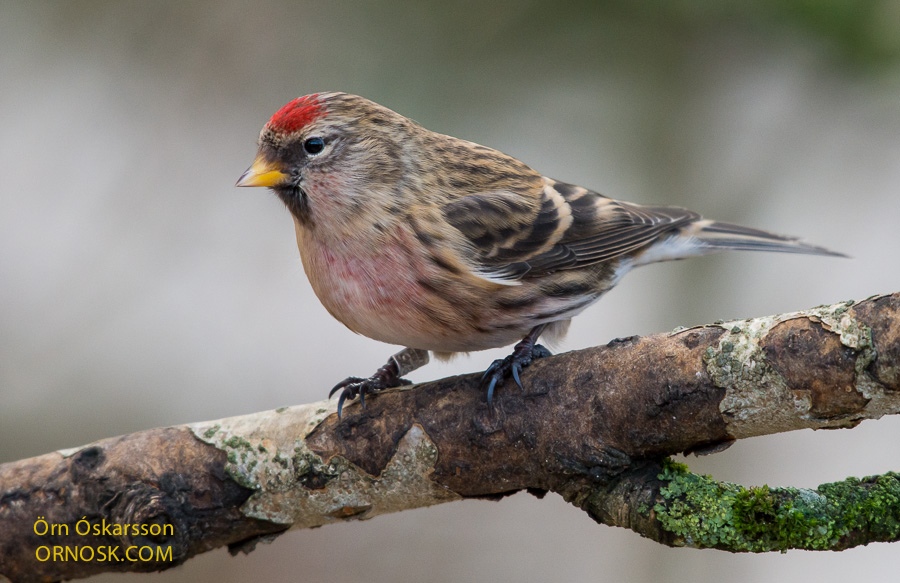
Again Redpolls have appeared in flocks in Selfoss hunting for food. In the last few days up to 40 have been in our garden. These chirpy and beautiful birds are welcome guests. Few of them were seen here before Christmas and birders and garden owners missed them and speculated as to their whereabouts. Some even maintained that the stock had declined or that Redpolls had fled the country. The truth is that enough seed was to be had in birch forests after a favourable summer. So there was no need for them to leave the forest in search of feed in urban areas. However, here they are again to the joy of probably everyone.
The photos are from this weekend in our garden in Selfoss.


